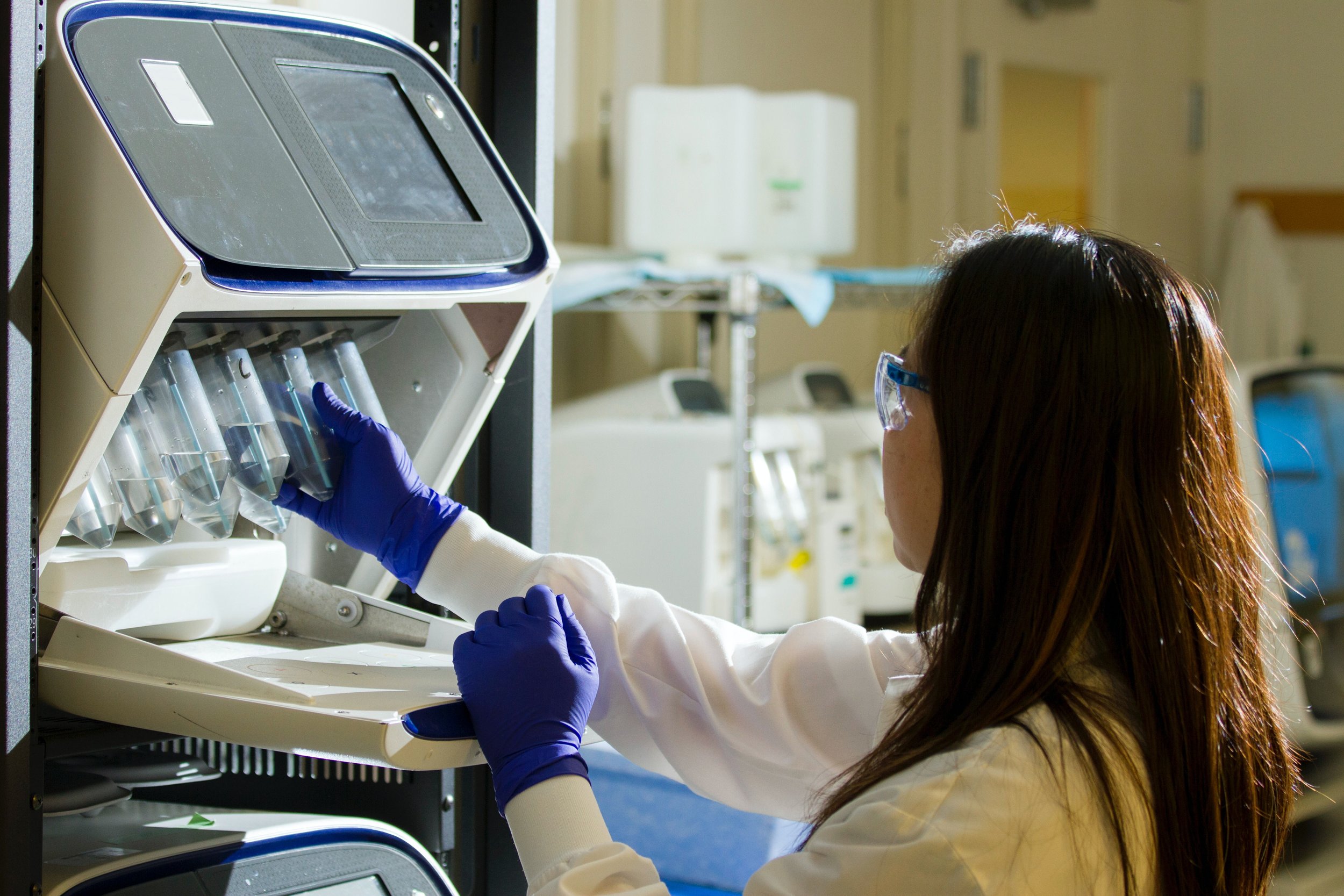Donating Blood Stem Cells
Blood stem cells make all of the blood and immune cells for a person for their entire life. Unfortunately, in some diseases, blood stem cells fail and they need to be replaced in order for the patient to survive. Through blood stem cell transplantation, healthy blood stem cells can replace diseased ones, potentially making all future blood and immune cells and curing the patient. Blood stem cells can be obtained from the placenta and umbilical cord of newborns, and from the peripheral blood or bone marrow of adults.
Blood stem cell transplantations are most commonly used to treat blood diseases (such as cancers or red blood cell disorders), bone marrow failure diseases, and certain diseases that result from missing or dysfunctional immune cells. Inherited metabolic diseases (deficiencies in breaking down substances in the body) can also be treated by transplantation. More about the specific diseases that can be treated by blood stem cell transplantation can be found at Be the Match.
Matching Donors and Patients for Cell Transplantation
Your immune system is constantly taking stock of the cells in your body to determine whether cells belong to you and should be left alone, or if they are foreign and should be attacked. It is critical that if you receive a transplantation that you do not mount an immune attack, which could kill the new cells or tissue, leading to transplant rejection. There is an additional complication when the cells that are donated produce their own immune system. In this case, the transplanted immune cells could mount an attack on the patient’s own tissues, which can be life-threatening. This is known as graft-versus-host-disease. For a patient to receive a blood stem cell transplantation, the stem cells must be immunologically compatible, or matched, so that they will not attack the patient’s tissues.
A donor and patient must be an immune match to avoid transplant rejection. The ideal donor is a matched relative, but this can only be found for about 25% of patients. The other 75% of patients may find a matched volunteer donor in a stem cell registry.
Stem cell registries contain the genetic information of millions of potential volunteers who can be connected with a patient. Donors can provide a genetic sample by simply rubbing a sterile swab along the inside of their cheek for 10 seconds. DNA is then isolated from these cheek cells, which is analyzed to identify the person’s immunological markers, revealing who they are immunologically compatible with. Matched stem cells can be collected from the volunteer and transplanted to the patient.
It is important for people of diverse genetic backgrounds to join these registries so that patients have the highest chance of finding stem cells that are a good match. There are global organizations, such as the World Marrow Donor Association and Be the Match, that coordinate global databases of blood stem cell donors to help patients find stem cells for transplantation. To join a bone marrow registry, contact an organization such as Be the Match, the largest international registry of blood stem cells. More information about donating blood stem cells or becoming part of a registry can also be found through the European Society for Blood and Marrow Transplantation, the Center for International Blood & Marrow Transplant Research, the Asian Pacific Blood and Marrow Transplantation Group, and the Australian Bone Marrow Donor Registry.
Figure 1: Blood stem cells, which reside in the bone marrow, make all types of cells of the blood and immune system, including red blood cells, white blood cells, and platelets.
Blood Stem Cell Collection
Blood stem cells for transplantation can be collected in several different ways. After a baby is delivered, blood stem cells can be collected from cord blood -- the blood found in the placenta and umbilical cord (to learn more see Cord Blood & Uses to Treat Disease).
Blood stem cells also can be collected later in life. In adults these stem cells reside in the soft, spongy area of bone, known as bone marrow. Blood stem cells can be collected directly from the bone marrow, but more often are mobilized into the blood stream and collected from a vein in the arm. Stem cells from either source can be collected for personal or family use or donated to a patient.
Of note, blood stem cell transplantation has only been shown to treat certain blood, immune, and metabolic diseases. Clinical trials are ongoing to evaluate blood stem cell transplantation for other types of disease, but consumers should be wary of providers advertising the use of blood stem cell transplantation to treat other diseases.
Figure 2: A. A potential donor gives a genetic sample by a cheek swab. Her DNA is then isolated, immunological markers are determined, and the information is entered into a stem cell registry. B. After it is determined that she is an immunological match with a patient looking for blood stem cells, the registry member is contacted to let her know she is eligible to donate. C. The donor’s blood stem cells are collected to transfer to patient. D. The patient undergoes a blood stem cell transplant to receive the donor’s blood stem cells in hopes of disease treatment.





